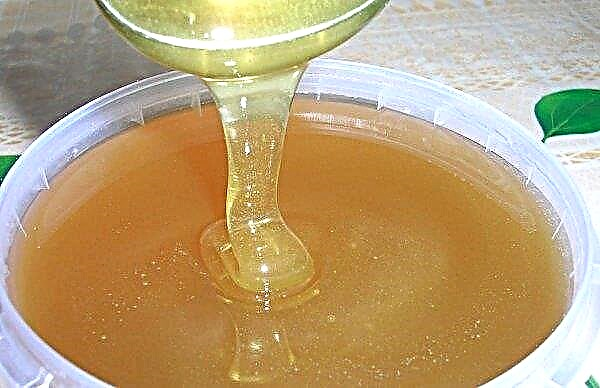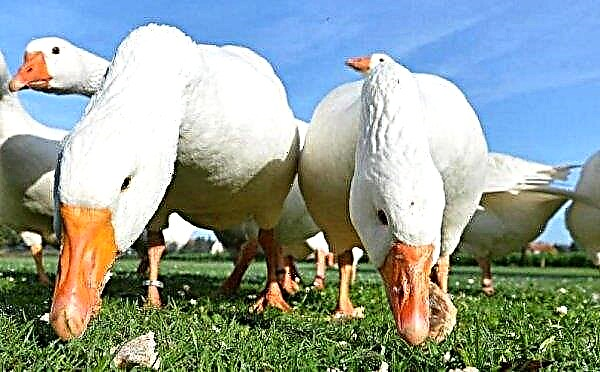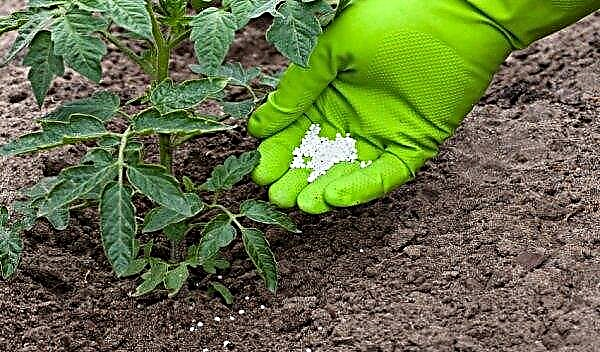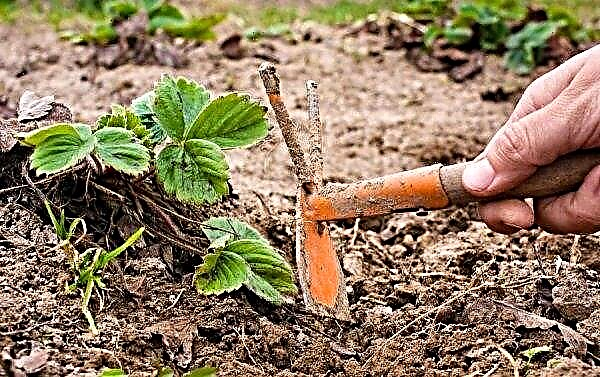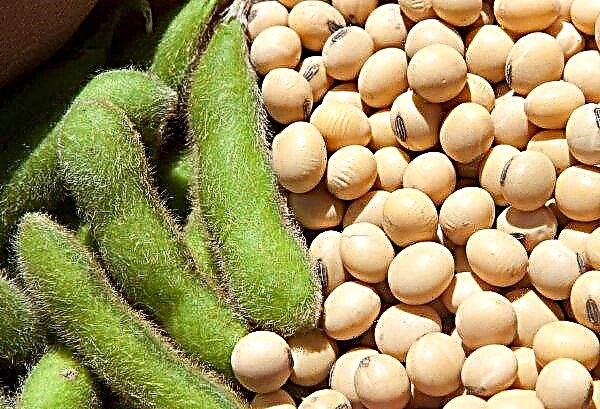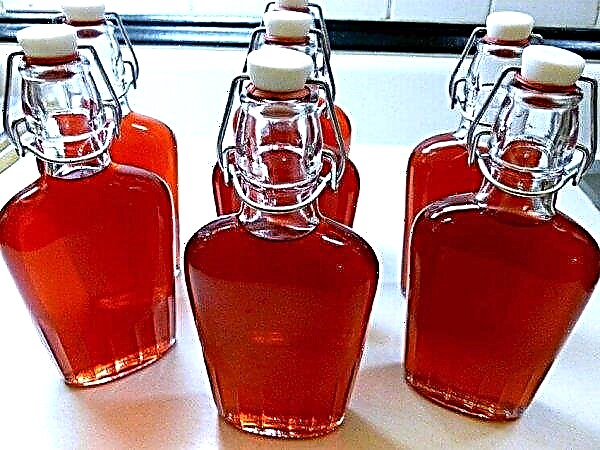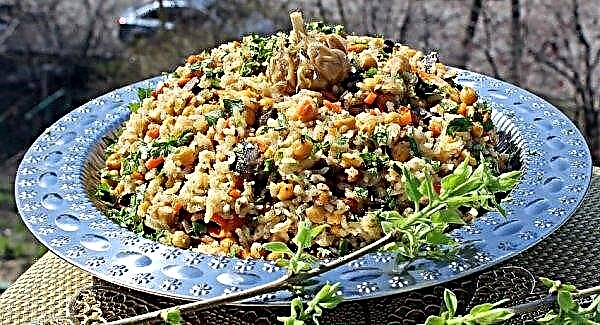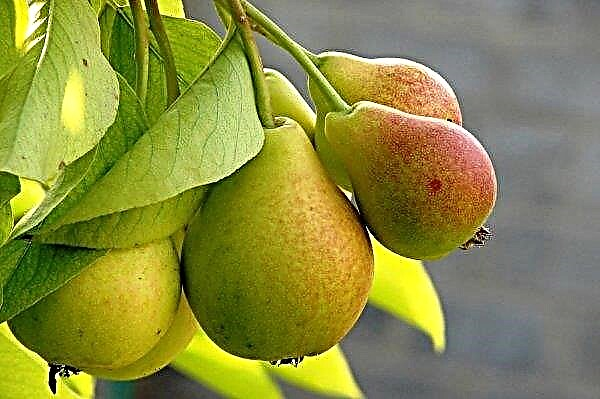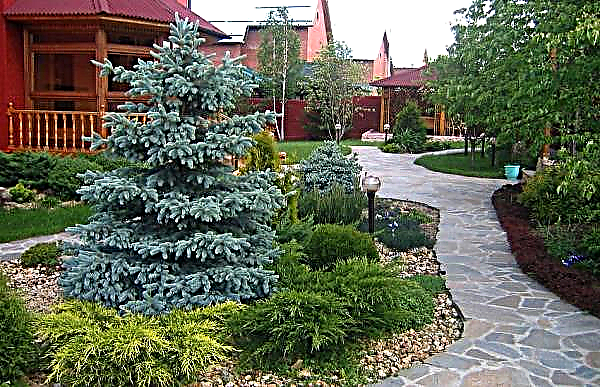Black Prince pepper - a spectacular perennial plant, one of the newest varieties of indoor bitter pepper. The species is valued for its flowering, aroma and fruits, similar to large dark beads. Read more about the characteristics of this unusual hybrid, as well as about the features of its cultivation in a living room, read in this article.
Description and characteristic
The black prince is a dwarf hybrid, the average height of the plant is 35–45 cm, sometimes reaches 90 cm. The bush is erect, densely leafy. The leaves are glossy, have an unusual violet (black-purple) color. The bush blooms and bears fruit abundantly and abundantly. The fruits are round dark purple, almost black in color. In the phase of full maturity, peppers turn red.
Ripened fruits are edible. Hot red pepper is popular in the East. And in dishes of Caucasian cuisine, it is massively used as a dry seasoning. Vegetable actively comes to European cuisine. The use of hot pepper in cooking is almost unlimited. Fragrant fruits can be used both raw and dried; both whole and ground. Homemade spices and preserves are prepared from them. This is a wonderful spicy spice for meat, fish, egg dishes, first courses, salads.
The use of hot pepper in cooking is almost unlimited. Fragrant fruits can be used both raw and dried; both whole and ground. Homemade spices and preserves are prepared from them. This is a wonderful spicy spice for meat, fish, egg dishes, first courses, salads.
The variety is recommended for year-round cultivation as a houseplant on the windowsill and in the summer on the balcony. Pepper is not whimsical to growing conditions and will not cause unnecessary worries when planting.
Pros and cons of growing
- Black Prince pepper has many advantages that make it attractive for lovers of vegetable indoor plants:
- amazing appearance;
- fruits of a specifically pungent taste and rich aroma;
- long and plentiful fruiting, independent of the season;
- unpretentiousness to growing conditions;
- lack of unnecessary care during landing;
- ripe fruits can be used as a burning seasoning in various dishes;
- the fruits are distinguished by excellent keeping quality;
- well tolerate transportation.
Did you know? Allegations that cayenne pepper cause gastritis and a stomach ulcer are erroneous. Studies have shown that a sharp vegetable, in contrast, kills bacteria that cause ulcers.
- The disadvantages of the culture are insignificant, they include:
- small fruits;
- relatively slow growth - the fruits ripen after about 3 months from the time of planting.
Planting and growing peppers
Being a perennial plant, the Black Prince, subject to the rules of care, can live on your windowsill for about 10 years.
Landing conditions
In order for seedlings to appear as early as possible, it is necessary to create greenhouse conditions. The microclimate should be moist and warm. Air temperature should be not less than +20 ... + 25 ° С. Humidity should be at least 60–70%. It also takes a lot of light. Optimal lighting is bright diffused light, but shade from direct sunlight. It is advisable to install fluorescent lamps and keep them above the landings for at least 16–18 hours a day.
It also takes a lot of light. Optimal lighting is bright diffused light, but shade from direct sunlight. It is advisable to install fluorescent lamps and keep them above the landings for at least 16–18 hours a day.
Preparing seeds for sowing
Seeds are very small and have little vitality, so they can disappear without preparation. Disinfect them in a potassium permanganate solution for 20 minutes, then rinse in clean water. Treat pure seed with a growth stimulant, for example, Epin.
Place the seeds in a slightly damp cloth, cover with foil or place in a plastic bag, leaving a hole. Before germination, keep the seeds in a warm place with a temperature of +25 ... + 26 ° C. Add water as needed.
Did you know? To extinguish the “fire” in the mouth from peppers that are too hot, you need to drink milk, not water, otherwise the effect will be reversed. Natural yogurt or a slice of lemon also helps to neutralize the burning sensation.
Optimal landing times
Seeds are sown in late February - early March. With constant temperature maintenance at +20 ... + 24 ° С, the first seedlings appear after one to two weeks.
Soil requirements
For a permanent pot, it is advisable to prepare the nutrient soil yourself. At the same time, remember that slightly acidic soil (about 6.4–7 pH) is suitable for pepper.
Mix the following items:
- 4 parts of leaf or compost humus;
- 4 parts of neutralized peat;
- 2 parts of vermiculite - supports the inflated state of the soil and helps it retain moisture.

Landing technology
Land as follows:
- To create good drainage, pour a 3-cm layer of pure gravel or garden expanded clay into the selected container.
- Sprinkle the soil mixture on top. Additionally, you can make humus, compost and river sand.
- Sow the seeds scatter to a depth of 1-1.5 cm.
- Sprinkle the seeds on top with a small amount of sifted soil.
Pepper Care After Planting
Standard care for decorative peppers includes regular heavy watering, the application of organic fertilizers, hilling, shallow loosening of the soil, as well as pruning and annual transplanting.
Watering and feeding
The Black Prince loves a humid environment, so from spring to autumn, watering should be plentiful. Moisten the soil about 2 times a week. Use standing warm water. With the advent of autumn, reduce the frequency of watering.
Important! Drying of the soil in pots should not be allowed; it should always remain a little moist.
In the spring-summer period, fertilize the bush with a ready-made complex composition with a frequency of twice a month. Pepper reacts positively to organics (wood ash, chicken droppings, mullein solution).
From autumn to spring, reduce feeding to once every three weeks. However, in the absence of the proper temperature and additional illumination of feeding, it is better not to carry out. The bush is recommended several times during the season to carefully spud with moist soil. Loosen the soil when it dries a little. Do not loosen deep so as not to disturb the root system of the plant.
Pruning
So that the bush does not stretch excessively, retains a lush crown and abundant fruiting, you need to slightly pinch the tip of each branch. Usually this manipulation is carried out at the first fruiting.

The pepper bush tolerates pruning safely. Systematically cut half the length of each shoot. As soon as lateral shoots or branches appear, knocking out of the crown, they should be trimmed.
Transfer
As soon as the sprouts of the Black Prince in the container reach 5 cm, plant them in different flowerpots. If this is not done, the plants will grow weak and will be unable to bear a large number of fruits. In the future, the Black Prince needs an annual transplant. It should be carried out in January.
When transplanting, peppers experience a lot of stress, so carry out the operation very carefully, transshipment, adding new soil to the pot. The main task of transplantation is soil renewal. In order not to injure the delicate bush, try to partially replace the soil, without resorting to a full-fledged transplant.
Pest and Disease Control
The Black Prince is practically not affected by ailments and parasites. With waterlogging of the earth, the plant can get late blight or root rot. If you find brown or black spots on the leaves, treat the foliage with a copper preparation as soon as possible.
Another symptom that the bush is sick is the wilting of leaf blades. You can save pepper by extracting it from the old soil mixture and a complete transplant.
The attack of a spider mite and a mealybug is occasionally possible. In the first case, only the root system is attacked, so it is almost impossible to identify a nuisance at the initial stage. It is quite difficult to deal with the spider mite, therefore it is advisable to prevent its appearance by disinfecting the soil before sowing.

Poor care with deviations from humidity and temperature increases the risk of damage to the plant by the mealybug. With a severe defeat by a tick or mealybug, emergency measures are required. At intervals of 7-14 days, spray the bush with Fitoverm (a herbal preparation, it is safe for home use).
Important! In order to prevent spider mites, it is important to decontaminate the soil mixture. Treat it with a solution of potassium permanganate (1-2%), after which additional treatment with a biological preparation (Trichodermin or Planriz) is recommended. If the soil was taken from the garden, pour it with a fungicide solution (for example, “Fitosporin”).
Recommendations for growing a Black Prince
To summarize, we suggest you familiarize yourself with the recommendations of professional plant growers for growing the Black Prince in an apartment or house:
- For the normal development of the Black Prince, a temperature in the range of +10 ... + 21 ° C is permissible. An important feature of homemade pepper is that it needs the difference between morning and night temperatures. In this regard, it is recommended to take the flowerpot to fresh air at partial shade, especially in summer.
- The shrub needs natural light for 12 hours a day, and from autumn to spring it needs additional illumination.
- If you do not plan to install artificial lighting lamps and do not expect the bush to bloom in February, then you can resort to radical pruning. Cut branches about a third of the length and immediately stop abundant watering.
- To pepper better fruiting, conduct artificial pollination. To do this, use a soft brush, or simply transfer the pollen with your fingers.
- The room where the bush grows must be aired. Pepper does not tolerate stale air.
- Sometimes a shrub drops leaves and fruits. This can happen as a result of a sharp drop in temperature, humidity or lack of light.
- In the summer season, at least once a week, be sure to spray the foliage with water at room temperature.
- In winter, when the radiator heating system is operating in the apartment, place containers with water near the home shrub. This will help compensate for the lack of moisture in the air.

As you can see, there is nothing complicated in growing Black Prince pepper. Subject to the basic rules of care, this perennial will look very catchy and unusual on your windowsill. The shrub will be able to please you all year round with its attractive flowering and bright red fruits.

